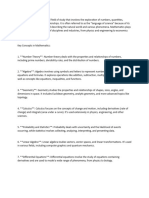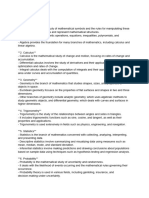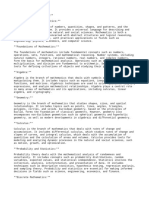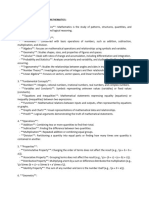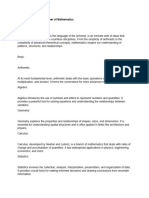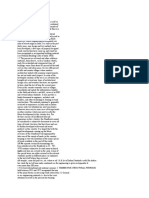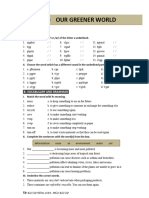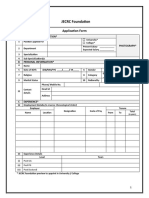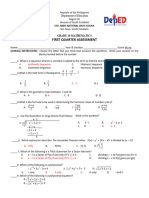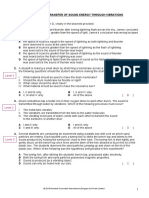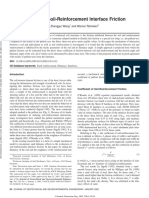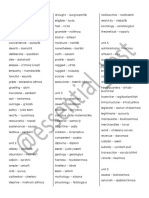0% found this document useful (0 votes)
11 views2 pagesMaths
The document provides a comprehensive overview of key concepts in mathematics, outlining its foundational role in various fields. It covers several branches including Arithmetic, Algebra, Geometry, Trigonometry, and Calculus, each with their specific focus and applications. The information highlights the logical structure of mathematics and its relevance in modeling real-world phenomena.
Uploaded by
wagawtesfawtCopyright
© © All Rights Reserved
We take content rights seriously. If you suspect this is your content, claim it here.
Available Formats
Download as DOCX, PDF, TXT or read online on Scribd
0% found this document useful (0 votes)
11 views2 pagesMaths
The document provides a comprehensive overview of key concepts in mathematics, outlining its foundational role in various fields. It covers several branches including Arithmetic, Algebra, Geometry, Trigonometry, and Calculus, each with their specific focus and applications. The information highlights the logical structure of mathematics and its relevance in modeling real-world phenomena.
Uploaded by
wagawtesfawtCopyright
© © All Rights Reserved
We take content rights seriously. If you suspect this is your content, claim it here.
Available Formats
Download as DOCX, PDF, TXT or read online on Scribd
/ 2








